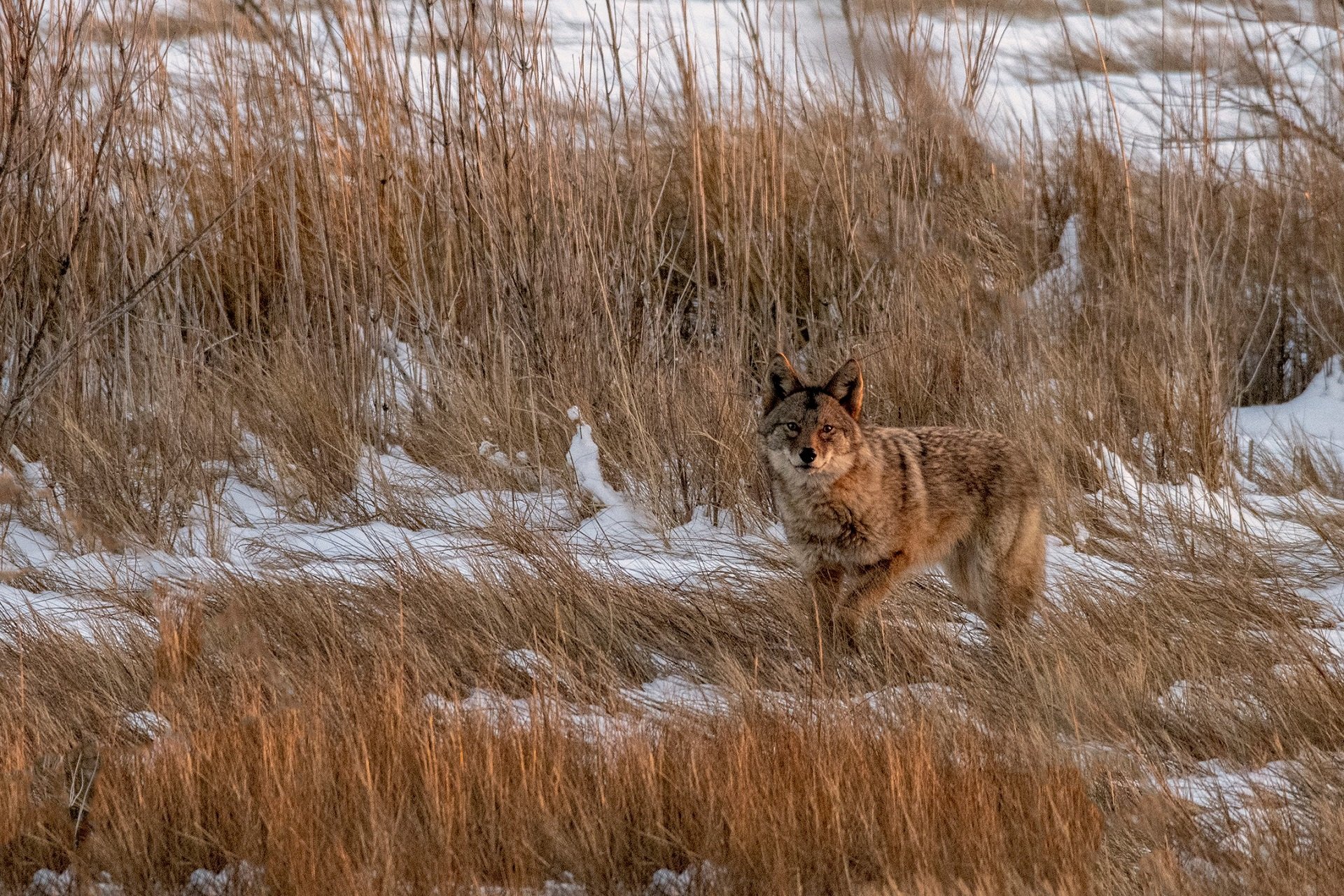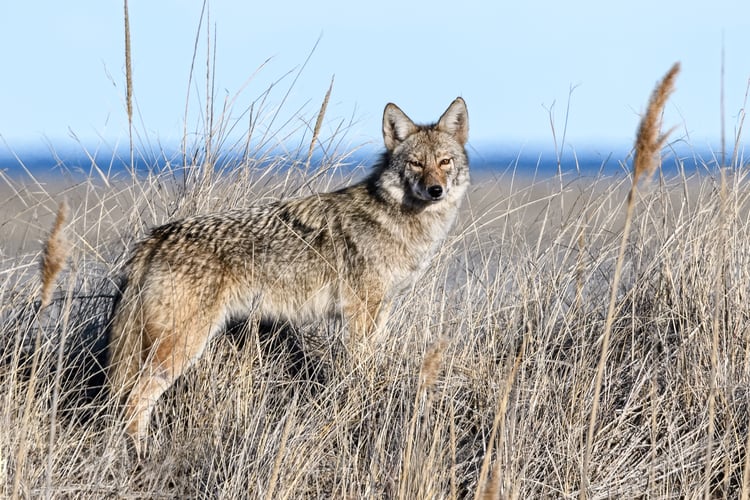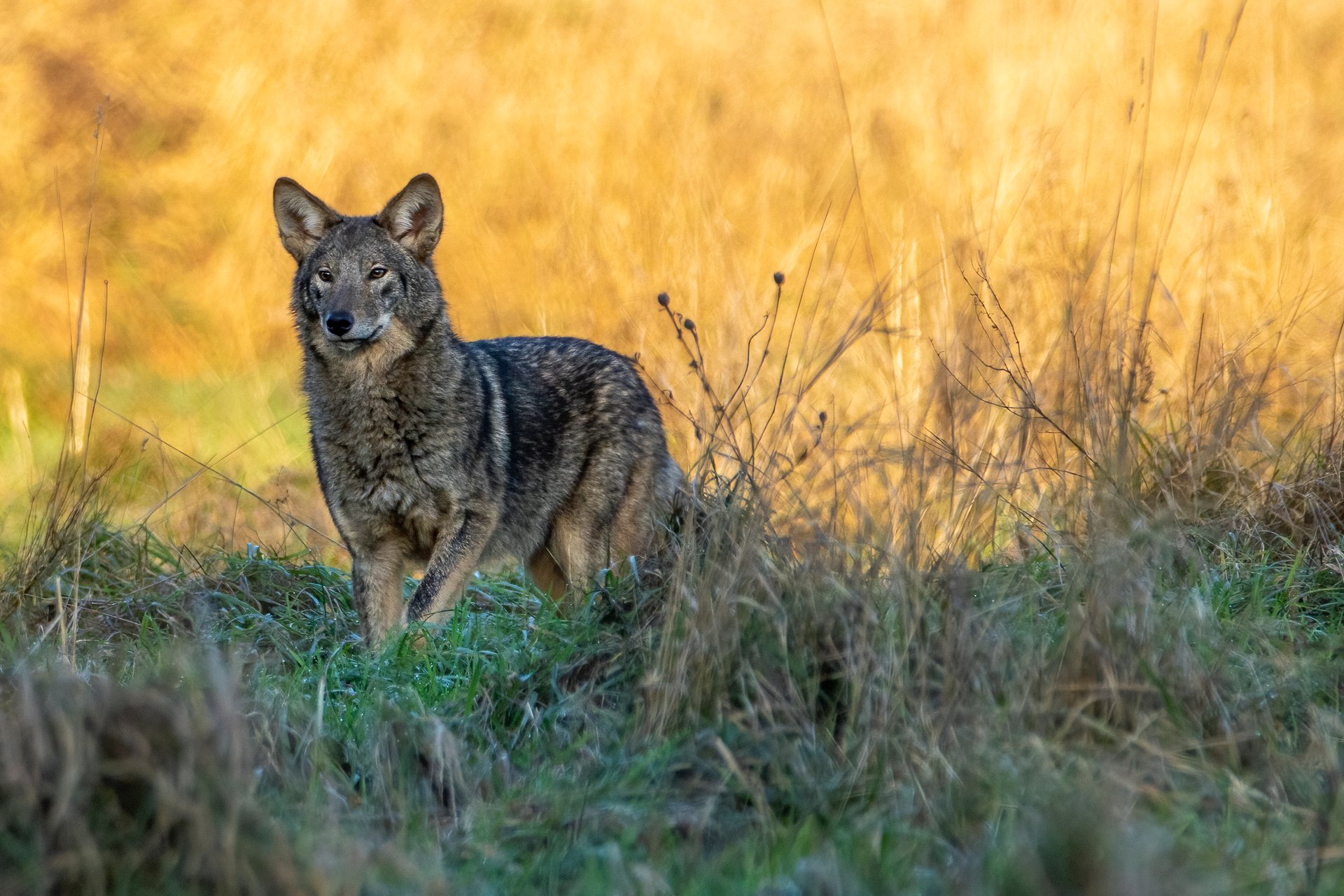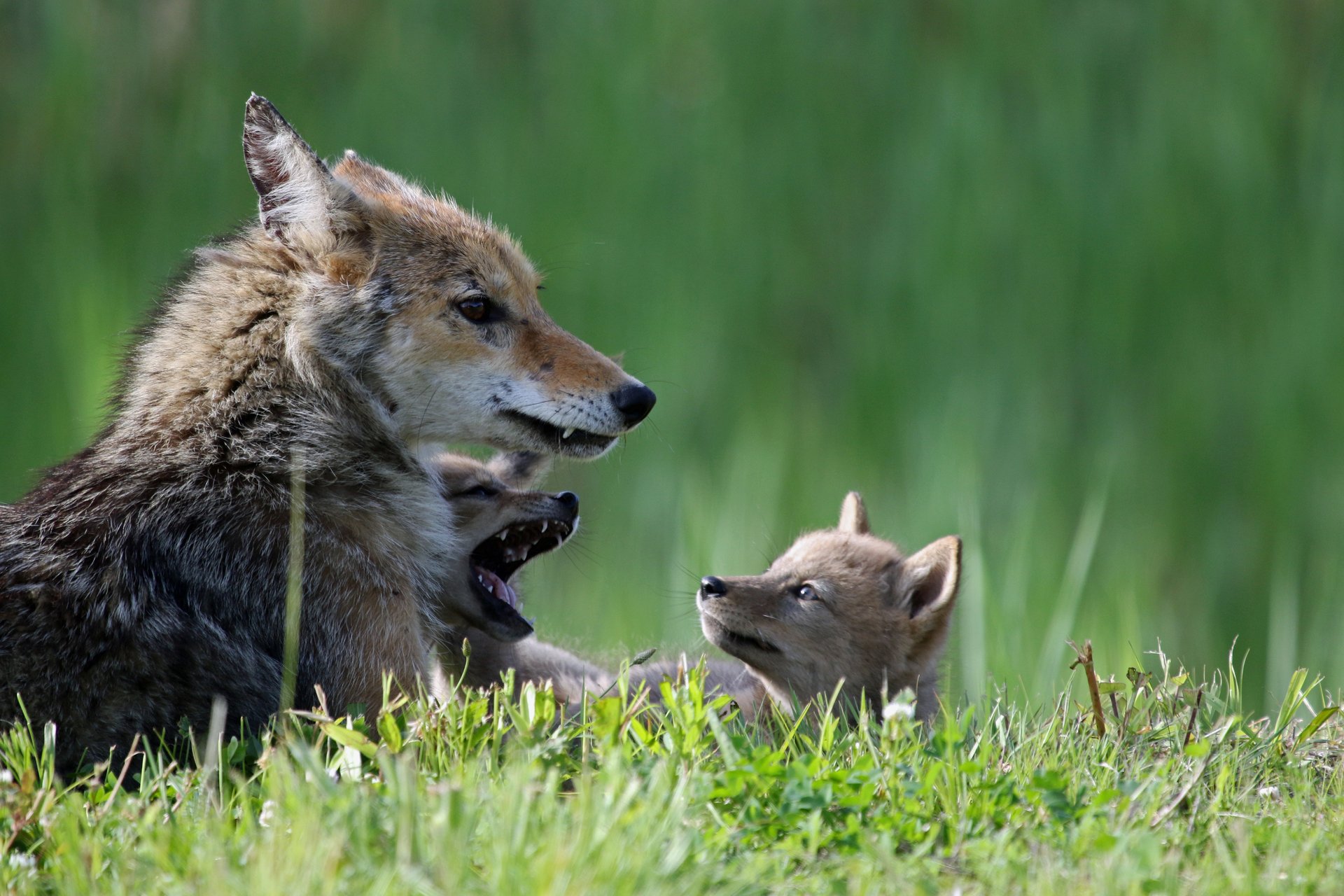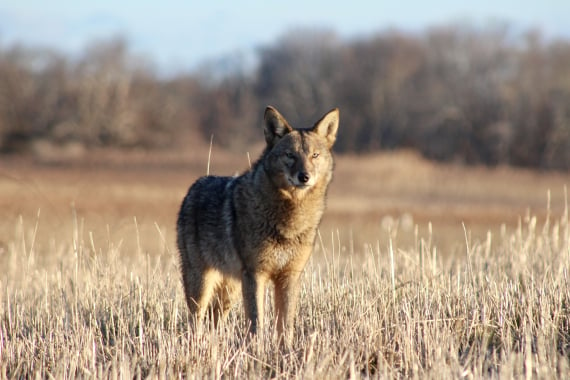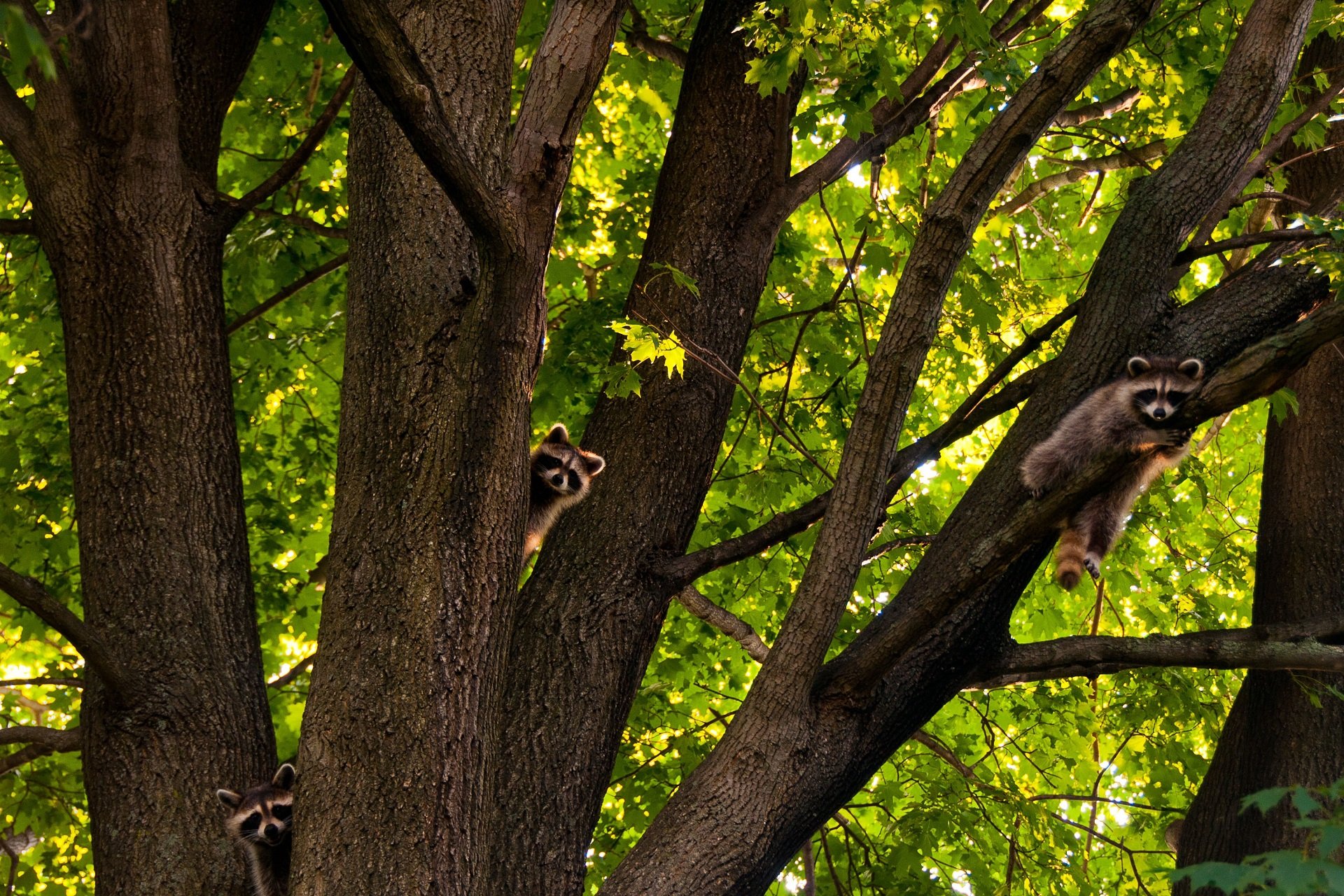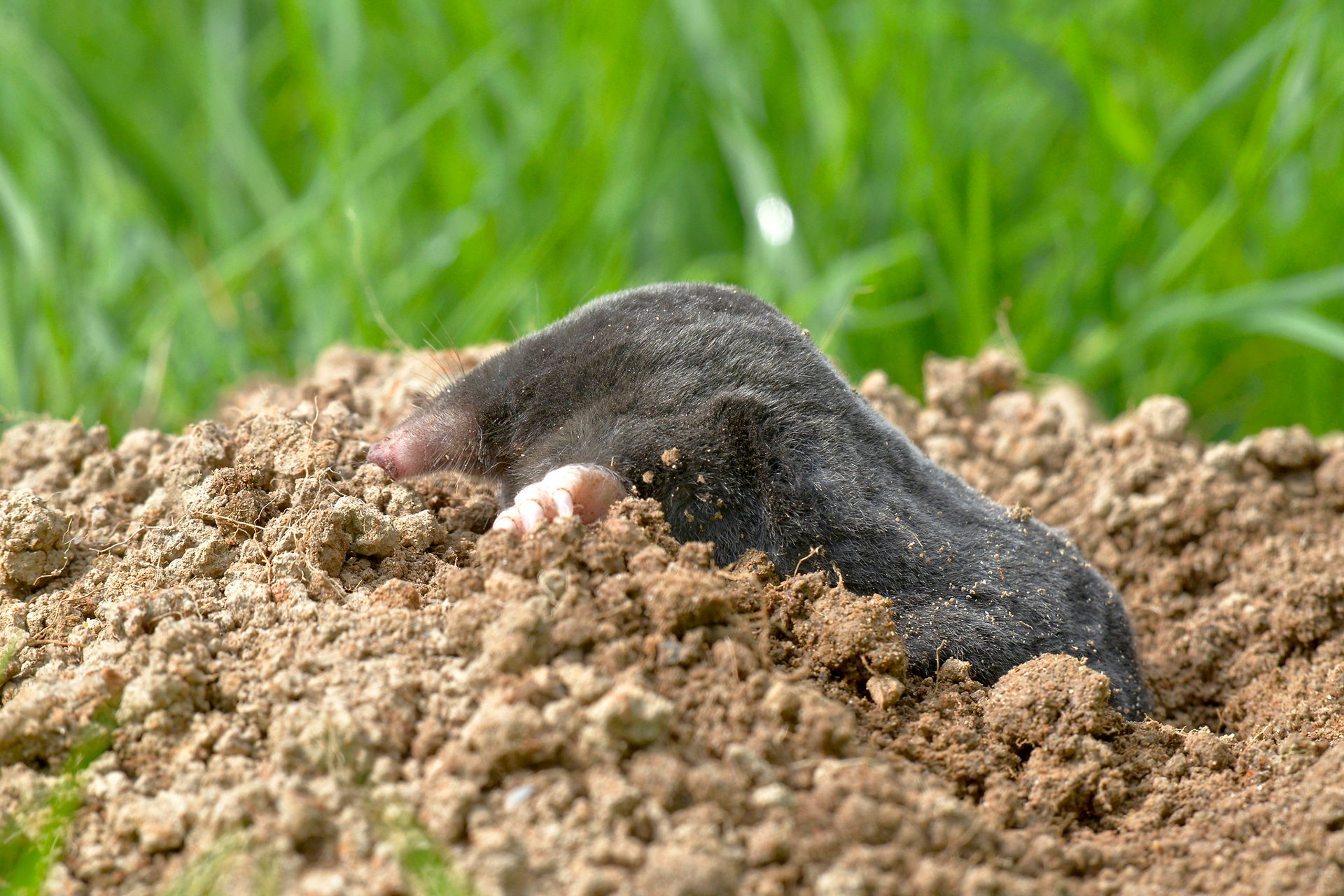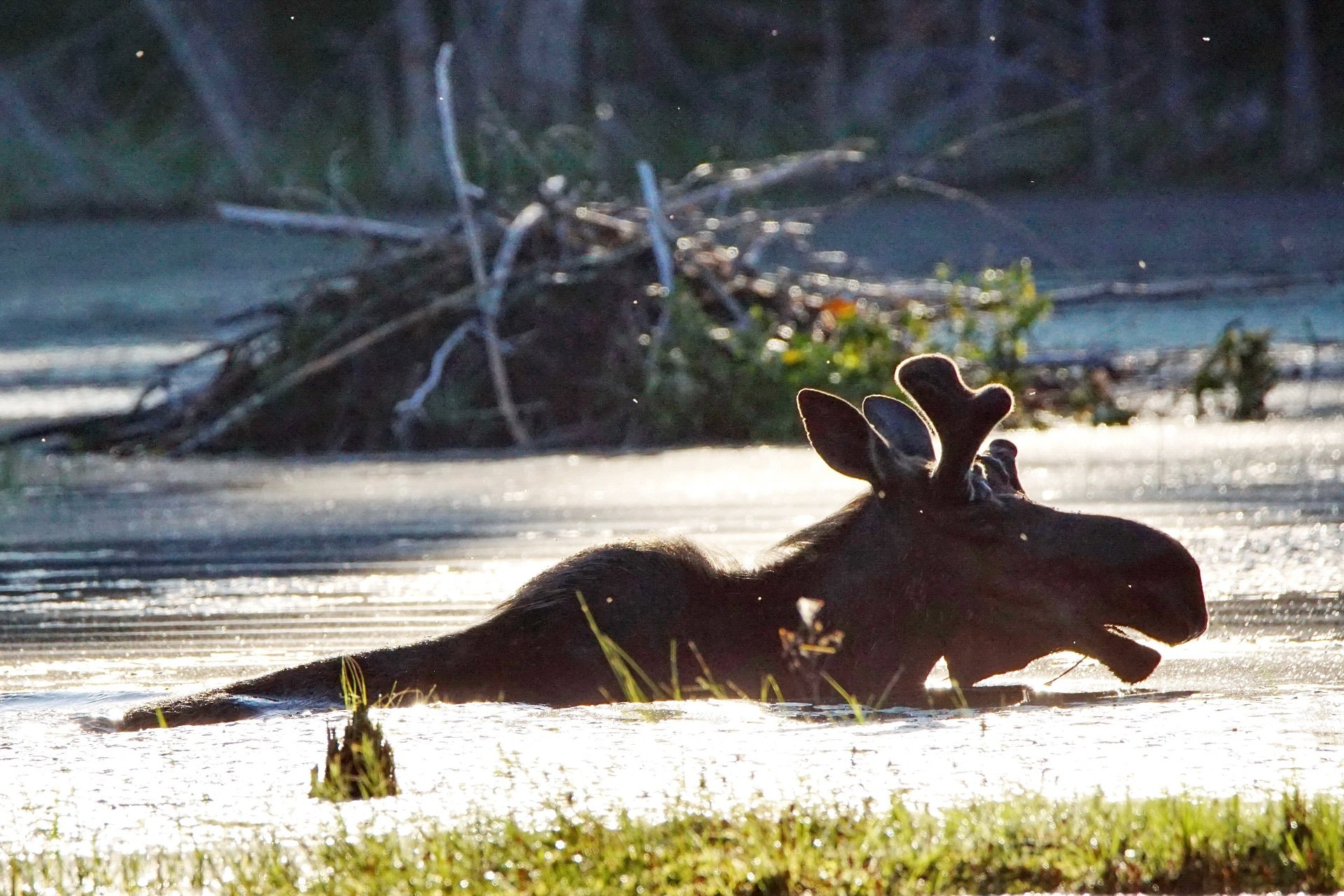Mammals in Massachusetts
Coyotes
Eastern Coyotes (Canis latrans) are resourceful creatures who have successfully adapted to areas altered by people. They can survive in forests, fields, thickets, marshes, and woodlands as well as populated suburbs. Mainly nocturnal animals, coyotes are most often observed at dawn or dusk but can be active at any time.
Eastern Coyotes are believed by some researchers to be a hybridization between the western coyote and red wolves many generations ago in the upper Great Lakes region.
Identifying Eastern Coyotes
Adult coyotes are more than double the size of gray foxes, and coyotes in the eastern US tend to be bigger than those in the west.
Except for their size, male and female coyotes look alike; both have pointed noses, erect ears, bushy, black-tipped tails that hang down when they run, long legs, and long dense fur which varies in color from gray to cinnamon gray.
The Eastern Coyote stands 23-26" tall with a body length of 42-52", including their 12–15-inch bushy tail. In Massachusetts, females range from 34-37 pounds and males 34-47 pounds.
When comparing wolves and coyotes, wolves are bigger and slightly darker, but there are no wild wolves left in Massachusetts.
Coyote Behavior
What Do Coyotes Eat?
Coyotes are opportunistic feeders and will eat just about anything. Deer carrion is a favored food source, but they also prey on small animals, insects, fruits, and berries. They also eat ground-nesting birds and their eggs as well as reptiles and amphibians.
Because of their resourceful appetites, it’s best practice to secure your garbage and never leave dog food outside or small dogs unattended.
Coyote Breeding
Most Eastern Coyotes are monogamous and do not mate until their second year. In Massachusetts, breeding takes place in February. During March, coyotes will seek out and excavate their den sites in preparation.
Coyote Dens
Their dens, which are occupied to birth, are located on slopes, banks, or rocky ledges and are often hidden under downed trees, stumps, or in culverts. Although capable of digging their own den, they frequently enlarge abandoned burrows of woodchucks, foxes, or skunks.
Coyote Pups
In April, after a 60 to 65-day gestation period, female coyotes give birth to 4-8 pups. They weigh about a 1/2 pound at birth and are nursed for about two weeks. When their eyes open at 10-14 days, they begin eating regurgitated food provided by their parents.
As the young grow and become more mobile, the female leaves the den to hunt. There have even been reports of offspring from the previous litter bringing food to the pups. The pups are weaned at nine weeks and begin hunting on their own by mid-summer.
When the pups are very young, traits emerge that identify one male and one female pup as being dominant over the others in the litter. In the fall, the dominant pups remain in the parents' territory, while the others disperse. These young, inexperienced coyotes, now on their own, have less than a 50% survival rate; cars, hunters, and trappers account for most of the deaths.
Are Coyotes Dangerous?
Coyotes are wary animals who will avoid people at all costs; however, increased coyote sightings in suburbia can make people nervous. Always give coyotes plenty of space and avoid approaching any wild animal. Coyote attacks on humans are rare in Massachusetts; during the last 60 years, there have been fewer than 10.
How to Deter Coyotes from Visiting
The prospect of an easy meal can lure coyotes into yards, especially when other small animals are also present. If a coyote does appear in your yard, don’t try to approach them or their pups.
To make your property less attractive to coyotes, follow these steps:
- Don't leave pet food outdoors. If you must feed pets outdoors, provide only the amount your pet will consume in one feeding.
- Secure your garbage. Coyotes can knock over trashcans and tear open trash bags left in the open.
- Pick up fallen fruit. Fruit that has fallen to the ground and left to rot can be appealing to wildlife, including coyotes.
- Don't feed coyotes. Feeding ultimately alters the animals' behavior; they become dependent and less wary of humans.
- Keep pets indoors. A roaming cat or small dog can be perceived as prey by coyotes. There have been rare cases of unattended small dogs being taken by a coyote.
Found or Injured Coyotes
If you come across an injured or sick animal, you should never handle it, especially those susceptible to the rabies virus (including coyotes).
Threats to Coyotes
Humans are the largest threat to coyote populations. While they have adapted to survive in suburban and urban areas, coyotes thrive in forested or fielded habitats. Human development and climate change impacts threaten the health of these habitats.
Other threats to coyotes are mammalian-contracted diseases like rabies and vehicle collisions.
How Mass Audubon Helps Coyotes
Coyotes are important members in the overall health of Massachusetts ecosystems. They play the role of predator, keeping populations of the prey they eat in check. By fostering ideal habitats for coyotes in the wild, we can support their population in Massachusetts while minimizing their impact on human inhabited areas. You can help us conserve and protect coyotes by becoming a member today.
Stay Connected
Don't miss a beat on all the ways you can get outdoors, celebrate nature, and get involved.



